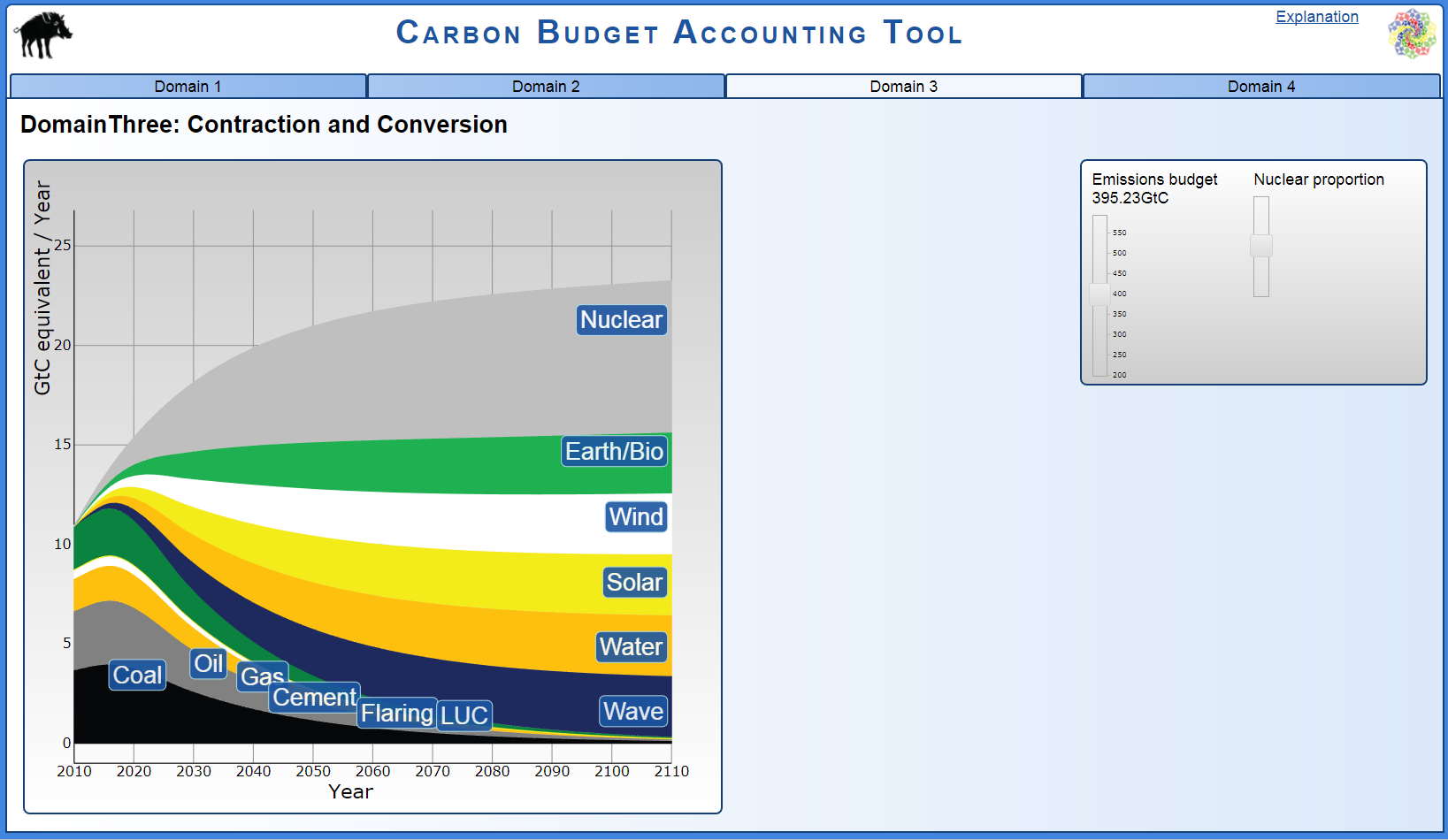The Carbon Budget Analysis Tool (CBAT)
Click logo to return to 'CBAT-general-page'
Here are the four 'domains' of CBAT where domains 2, 3 & 4 automatically pick up the user-selected carbon-budget emissions in domain 1.
On opening, the default setting is the contraction rate of global emissions - the global 'carbon-budget' - in the UK Climate Act.
It is 'cognitive-mapping', so the CBAT-user can increase or decrease this 'carbon-budget' and separately, the potential for the consequential change rates arising: -
- 'Domain One' - 'Contraction & Concentrations', with response arrays of 'climate feedbacks' & 'climate-effects' (temperature, sea level rise and ocean acidifcation)
- 'Domain Two' - 'Contraction and Convergence' where regional shares converge on the international per capita average arising
- 'Domain Three' - 'Contraction and Conversion' exploring the interactive rate at which fossil fuel consumption needs to be replaced with renewable sources
- 'Domain Four' - 'Climate Damages and Growth' exploring the rate of the climate-damage curves arising from different rates of carbon contraction
A description of CBAT by Plan-B was published thereafter; a technical note is here; Appreciation is here.
*************************************************************************CBAT Domain Three - Contraction & Conversion (Click image to animate)
The size (integral-weight, rate and date) of the 'global carbon budget' in Domain 4 (as with all 4 CBAT Domains)
is the primary user control in this Domain (see slider in the panel top right-hand corner).
In Domain Three the global carbon budget is partitioned as: -
- Coal
- Oil
- Gas
- Cement-Making
- Gas Flairing &
- Land Use Change (LUC)
The non-fossil fuel alternatives above the carbon budget are generically partitioned as: -
- Wave
- Water
- Solar
- Wind
- Earth/Bio
- Nuclear
A. the integral size (Weight/Rate/Date) of the global carbon budget can be user-controlled
from the slider in the panel (top right-hand corner).B. the proportion of Nuclear can be user-controlled between 16.66% to 50%
from the slider in the panel (top right-hand corner).
The first main point is that A & B are interactive so that: -
- the slower the carbon contraction rate the slower the renewable replacement rate
- the faster the carbon contraction rate the faster the renewable replacement rate.
The second main point is that the overall energy supply from A & B: -
- whatever the rate of carbon contraction and
- whatever the internal source-distribution of
- carbon and non carbon supply
is always projected to decelerate to stasis (here at 23 Gt C equivalent) by 2110.
The background assumption is that even if demand is projected as 'infinite', supply can never be infinite.*************************************************************************
